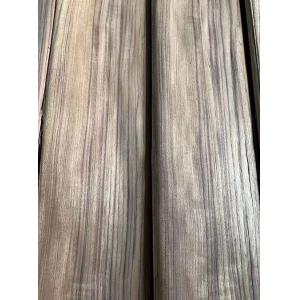

Add to Cart
Competitive 0.20MM Panel A Grade Burma Teak Wood Veneer, Myanmar Teak Wood Veneer
Veneer Cut: Crown Cut/Slice Cut
Grade: Panel A
Length: ≥250cm
Width ≥12 cm
Thickness: 0.20MM
Dry: Yes
Moisture Content: around 12%
Usage: Furniture, Fancy Plywood/MDF; Flooring,Door, Cabinet, Chest
TECHNIES SHEET:
| Product Name | Natural Wood Veneer |
| Wood Specie | Burma Teak |
| Other Name | Myanmar Teak |
| Wood Origin | Myanmar |
| Scientific Name | Tectona grandis |
| Grade | A |
| Veneer Cut | Crown Cut |
| Veneer Length | Panel≥250cm |
| Veneer Width | Flat Cut≥12cm |
| Veneer Thickness | 0.20MM (dry) |
| Moisture Content | around 12% |
| Payment Terms | T/T , L/C at sight, Western Union |
| OEM | Acceptable |
| Monthly Capacity | 500,000 Square Meters |
| Package | Wood Pallet |
| Delivery Port | Shanghai |
ABOUT BURMA TEAK:
Color/Appearance: Heartwood tends to be a golden or medium brown, with color
darkening with age.
Grain/Texture: Grain is straight, though it can occasionally be wavy or
interlocked. Coarse, uneven texture and moderate to low natural
luster. Raw, unfinished wood surfaces have a slightly oily or
greasy feel due to natural oils.
Endgrain: Ring-porous or semi-ring-porous; large to very large solitary
earlywood pores, medium to large latewood pores, few; solitary and
in radial multiples of 2-3; tyloses and other heartwood deposits
(light-colored) common; medium rays visible without lens, spacing
normal; parenchyma vasicentric, and banded (marginal), with bands
sometimes wide enough to enclose entire earlywood pores.
Rot Resistance: Teak has been considered by many to be the gold standard for decay
resistance, and its heartwood is rated as very durable. Teak is
also resistant to termites, though it is only moderately resistant
to marine borers and powder post beetles.
Workability: Easy to work in nearly all regards, with the only caveat being
that Teak contains a high level of silica (up to 1.4%) which has a
pronounced blunting effect on cutting edges. Despite its natural
oils, Teak usually glues and finishes well, though in some
instances it may be necessary to wipe the surface of the wood with
a solvent prior to gluing/finishing to reduce the natural oils on
the surface of the wood.
Allergies/Toxicity: Although severe reactions are quite uncommon, Teak has been
reported as a sensitizer. Usually most common reactions simply include eye, skin, and
respiratory irritation, as well as other health effects, such as
pink eye, rash, nausea, asthma-like symptoms, and vision effects.
See the articles Wood Allergies and Toxicity and Wood Dust Safety for more information.
Comments: Sometimes called Burmese Teak, this name is used to
differentiate natural-grown trees (typically from Myanmar, aka
Burma) from Teak grown on plantations. Used extensively in India
and within its natural range for centuries, Teak has grown into a
worldwide favorite. With its superb stability, good strength
properties, easy workability—and most of all, its outstanding
resistance to decay and rot—it’s no wonder that Teak ranks among
the most desired lumbers in the world.
Much like the many names and knockoffs of Mahogany, the moniker “Teak” has been affixed and assigned to a number of
different woods seeking acclaim. The usual procedure is to take a
wood bearing any degree of resemblance to Teak and insert a
geographical location in front of the name. For instance, Cumaru is sometimes referred to as Brazilian Teak, while Rhodesian Teak bears little botanical relation to real Teak—Tectona grandis. The
name Burmese Teak, however, does refer to genuine Teak.
ABOUT US:
Lonson Veneer Co.Ltd focus on Producing and exporting wood veneers
for 9 years. Our veneers include: Natural Wood Veneers, Fumed
(smoked) Veneers, Rough Cut (smoked) Veneer, Dyed Veneers,
Reconstituted Veneers. All sizes are available, wood flooring
veneers, furniture size, door size, Panel size. Grades A; A/B; C;
C/D, Monthly capacity 500,000 sqm. Until now, we already exported
to Indonesia, Vietnam, Malaysia, India, Pakistan, Bangladesh, UAE,
Philippines,Korea, etc more than 20 countries. Clients like our
quality wood veneers and always repeat orders. You are welcome to
inquire for any demands.
EXPORT PACKAGE:
FACTORY TOUR:
